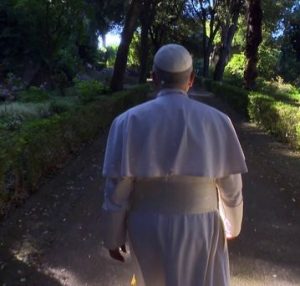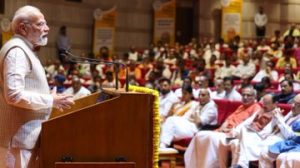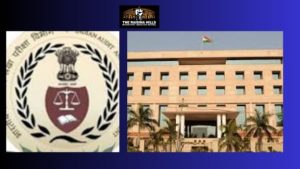JAGA Mission: A Game Changing Intervention

By Pradeep Kumar Panda
Bhubaneswar, July 3: There has been a steady increase in the Odisha’s urban population over the decades. As per 1941 Census, only three per cent of the total population in Odisha lived in cities and towns as against 13.86 per cent for India. Though the percentage of urban population is less in Odisha, the pace of urbanization in the State between 1941 and 2011 was low as compared to the pattern for the country as a whole.
In 2011 census, the proportion of population living in the urban areas of the state stood at 16.68 per cent as compared to 31.16 per cent for the country. Population density of Odisha stood at 269 per sq. km in 2011.
Odisha ranks 31st in the list of most urbanized states of the country, while in terms of actual urban population, the state ranks 11th in the list of states with the largest urban population. Urbanisation leads to increase in slums and slum dwellers in any economy.
Odisha Liveable Habitat Mission “JAGA” is a society under Housing & Urban Development Department, Government of Odisha, headed by the Chief Secretary, Odisha as Chairman and Principal Secretary, H&UD as Member Secretary. Odisha Liveable Habitat Mission (OLHM) – “JAGA” aims at transforming the slums into liveable habitat with all necessary civic infrastructure and services at par with the better off areas within the same urban local body (ULB) and to continuously improve the standard of the infrastructure and services and access to livelihood opportunities.
This Mission launched in May 2018 also aims at leveraging and converging various schemes/ programs/ funding opportunities by strengthening collaboration among various Departments/ Urban Bodies/ Non-Government Organisations/ Financial Institutions/ International Agencies/ Trusts/ Communities and other Stakeholders. It will also provide advisory support to Government of Odisha to examine options for policy reforms required for the sustainable transformation of lives of urban poor.
The rate of urbanization and the number of people living in urban and peri-urban settings has increased exponentially in the past century. Such exponential rise is due to flow of migrant populations, in search of higher income and livelihood opportunities. However, this results in formation of informal settlements that creates numerous challenges for existing infrastructure and resources. Informal settlements or slums are typically unhygienic and uninhabitable, lacking in basic services and are prone to high health risks. This has become more evident with COVID 19 pandemic, where slums became hotspots due to high concentration of population and with inadequate infrastructural facilities and services. In addition to basic necessities, these residents, even after residing for a long period of time, face further difficulties like, they lack a certificate of property title.
This title document is often the only way to show proof of address, to open a bank account, get credit from financial institutions, enroll children in schools, and access a range of government benefits including caste/ community certificates. As a matter of fact, it is the people living in the slums, who actually makes life of our cities comfortable through their services and sweat. The street-vendors, our house-helps, drivers, sanitation workers, daily-wagers, industry and construction workers are the people, who are keeping the life of the cities running, however, they themselves strive for fundamental necessities.
Acknowledging the crucial contribution of these people in the development of the cities and economy at large, and additionally, realizing their need of having title of land and basic facilities for a decent living, in August 2017, the Government of Odisha enacted a landmark legislation, The Odisha Land Rights to Slum Dwellers Act 2017 to assign land rights to slum dwellers in Municipalities and Notified Area Councils (NACs). The legislation is the first of its kind in India and marks a major policy shift by the Odisha government, as it seeks to settle slum dwellers on the land they currently occupy – rather than viewing them as ‘encroachers’.
As per this legislation, the slum dwellers in slums across the state became entitled to heritable and mortgageable land rights for upto 30 square meters for residential use. Further, depending on the extent of land, in current occupation by a slum household, there will be ceiling of 45 square meters in Municipalities and 60 square meters in Notified Area Councils (NACs) on payment of a certain percentage of benchmark value.
However, for urban poor households, land rights upto 30 square meters settled free of cost. The land right certificates are jointly issued in name of both spouses (in case of married couple) or in the name of single person (if the household is headed by a single person). As per the provisions of the Act, the land rights certificate shall be acceptable as proof of address for all purposes. The land rights are provided in-situ, as far as possible. The larger vision of Jaga Mission was not limited to land rights but with land security at foot on the door, it aimed for transforming slums into liveable habitat and creating an inclusive and integrated city fabric.
In May 2018, the project switched into a Mission-Mode and was launched by Chief Minister Naveen Patnaik to bring about the transformation into 2919 identified slums into liveable habitat with provisioning of basic infrastructures and services. This was named as Odisha Liveable Habitat Mission or Jaga Mission.
With coverage of approximately 1.7 million population, covering all the 114 ULBs of Odisha, this is one of the largest initiatives to reduce vulnerability of the urban poor in India by increasing tenure security and fundamental infra & services. The Mission is unique, not just in what it has embarked upon doing but also in how it is executed. The standard operating procedure developed for implementing the initiative involves a unique combination of state-of-the-art technological interventions such as high-resolution mapping of slums using drones, together with time-tested participatory & community mobilization approaches using grassroots organizations & associations of slum dwellers.
Jaga Mission’ proved to be a radical move in protecting the lives of most vulnerable urban poor, particularly, during the pandemic and has provided an unprecedented opportunity to make cities more inclusive and resilient.
The objective of Jaga Mission aimed to transform the existing slums into liveable habitat, coined as Biju Adarsh Colony. It adopted four-pronged approach to achieve the objective: Providing Tenure Security: Grant of Land Rights (Land Right Certificates and Land Entitlement Certificates) to all eligible households living in slums in urban areas in Odisha; Holistic development of habitat (Slum upgradation and delisting): Transforming the existing conditions of slum into living and decent habitable conditions through provision of basic civic services amenities & infrastructures; Improved Housing & Settlements: Enabling households, who have obtained Land Rights to avail housing benefits; Mainstreaming slum communities: Mainstreaming through participatory planning and governance through which Slum Dweller Associations can participate and partner with the city administration in making plans for their own settlements and also in other city development works. Strengthening of capacities of SDAs as 4th tier of governance.
The Mission has progressed rapidly, profoundly and significantly during the last 4 years and the following are the key achievements: Jaga Mission, (with the technical support from Tata Trusts), adopted the aerial survey of slum households, through GIS technology, integrated with revenue features, that enabled to generate a rich and unique data base of spatial and household data of 2,077 slums in the state within a very limited time-span
Household survey (USHA) conducted for 1,72,656 families. Through eligibility evaluation process, followed with UASRRC approval, a number of 1.7 Lakh families were granted with Land Rights Certificates and Land Entitlement Certificates.
Financial assistance to the tune of 812 Cr mobilized for 40,622 Land Rights beneficiaries. Through rigorous community connects, awareness campaigns, capacity building exercises, a number of 2,919 Slum Development Associations (SDAs) were strengthened and mobilized to act/stand as the ‘voice of the people’ in their respective slums and actively participate in various decision-making and slum improvement works.
Jaga Mission supported the state to quickly rollout Urban Wage Employment Initiative (UWEI), the first-of-its-kind in the country, as a response to COVID pandemic. The accessibility of data from trusted primary sources has led to unprecedented speed of project execution. Under Jaga Mission in convergence with UWEI various labour intensive projects were undertaken to engage skilled and un-skilled people, who were grossly affected during the pandemic.
Under this initiative, Multipurpose Community Centers named as “Parichaya” and (vacant) Open spaces were constructed/developed within the locality of the slums, that can be accessed by every family and community. They are for the purpose of having meetings, conducting social functions, performing livelihood and income generating activities and other activities of slum communities. Open spaces are developed as play areas for children and recreational spaces for all age groups. More than 300 Parichaya and 200 Open spaces were developed during the Phase I of the Mission.
The Government of Odisha in May 2018 launched JAGA Mission- the world’s largest slum titling and upgradation initiative based on the Landmark “The Odisha Land Rights to Slum Dwellers Act, 2017”.
In successful implementation of the provisions of the Act and the distribution of over 60,000 Land Rights Certificate (LRCs), JAGA Mission is now moved to its next critical stage of transforming slums into livable habitats. JAGA Mission Slum Up-gradation and Delisting initiative focus on upgradation of slums by addressing the primary inequalities prevailing in urban areas to integrate the informal settlements into the mainstream city fabric. Honorable CM has announced that in the next 3 years all the 2919 slums of Odisha will be transformed into “Adarsh Colonies”.
To fulfil the vision of there are 7 partners in the JAGA Mission – Tata Trusts, CPR and Janaagraha. Major target for the Utkal Divas is to De-List 581 slums across 19 ULBs. For the Pilot Phase 19 ULBs have been taken up based on their Tenability Analysis. For this Janaagraha is actively focusing on the Capacity Building of the ULB officers, Ward Officers and the SDAs members. The scheme witnessed successful completion the first round of Capacity Building Training of 19 ULBs and on 26 th November, 2020 we will complete the Capacity Building Training of all the ULBs (114) of Odisha.
This game changing intervention was recognized by the prestigious UN World Habitat Award (2019), India Geospatial Excellence Award (2019), Janaagraha City Governance Award (2021), and Asia-Pacific Housing Forum Innovation Award (2021).







